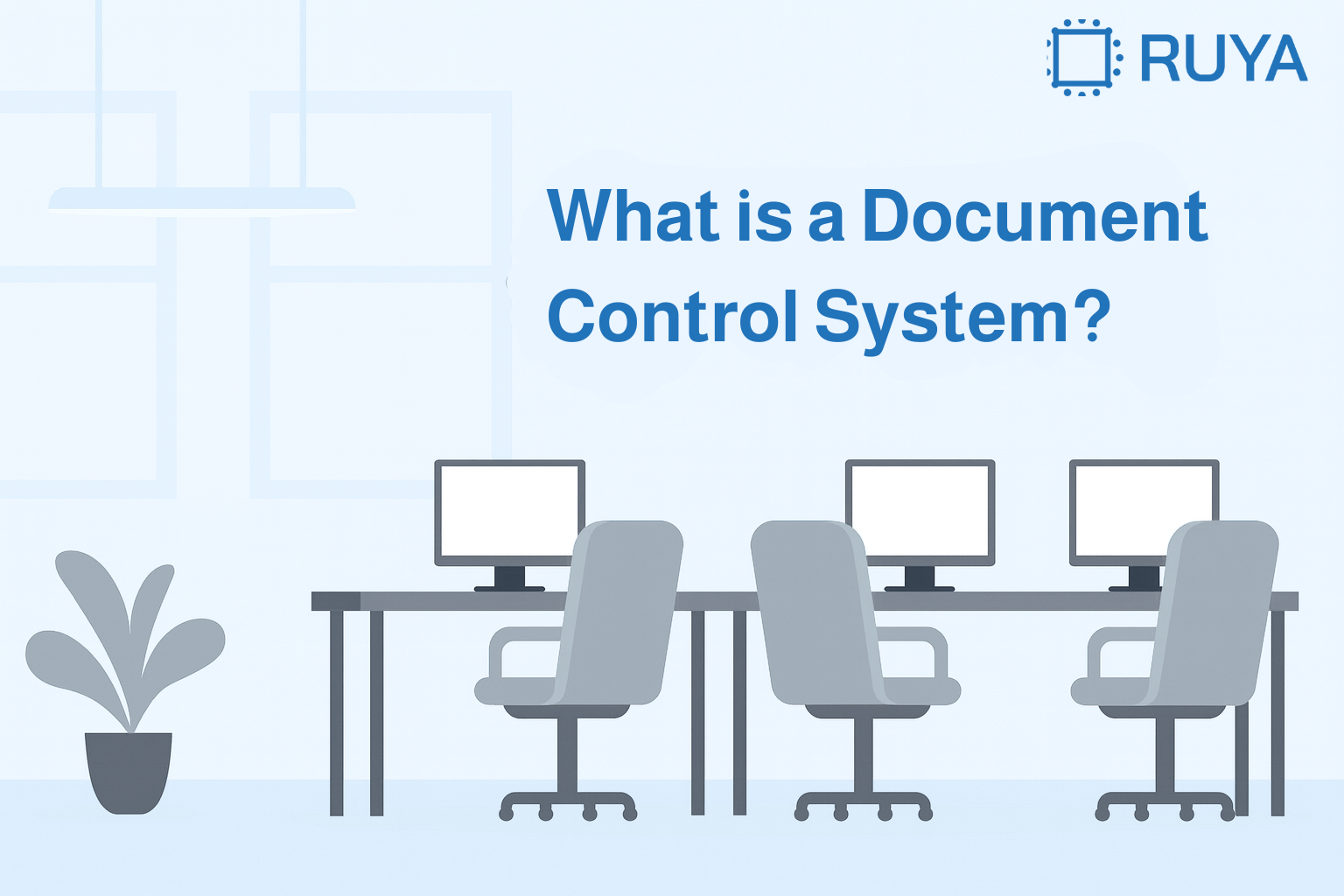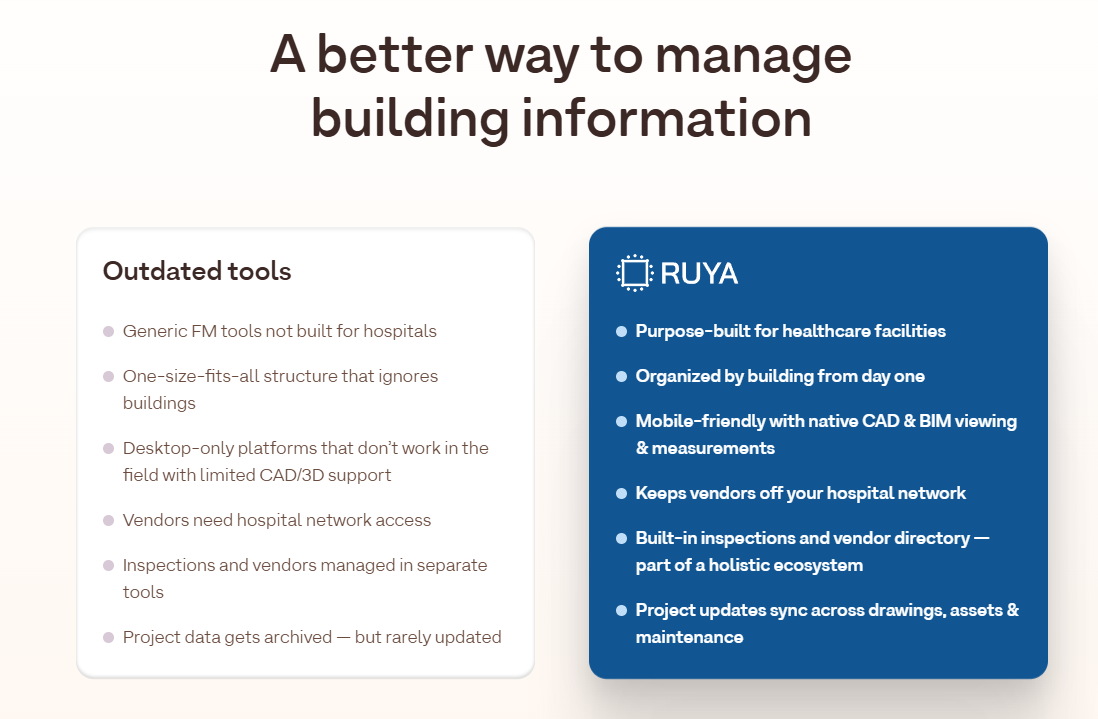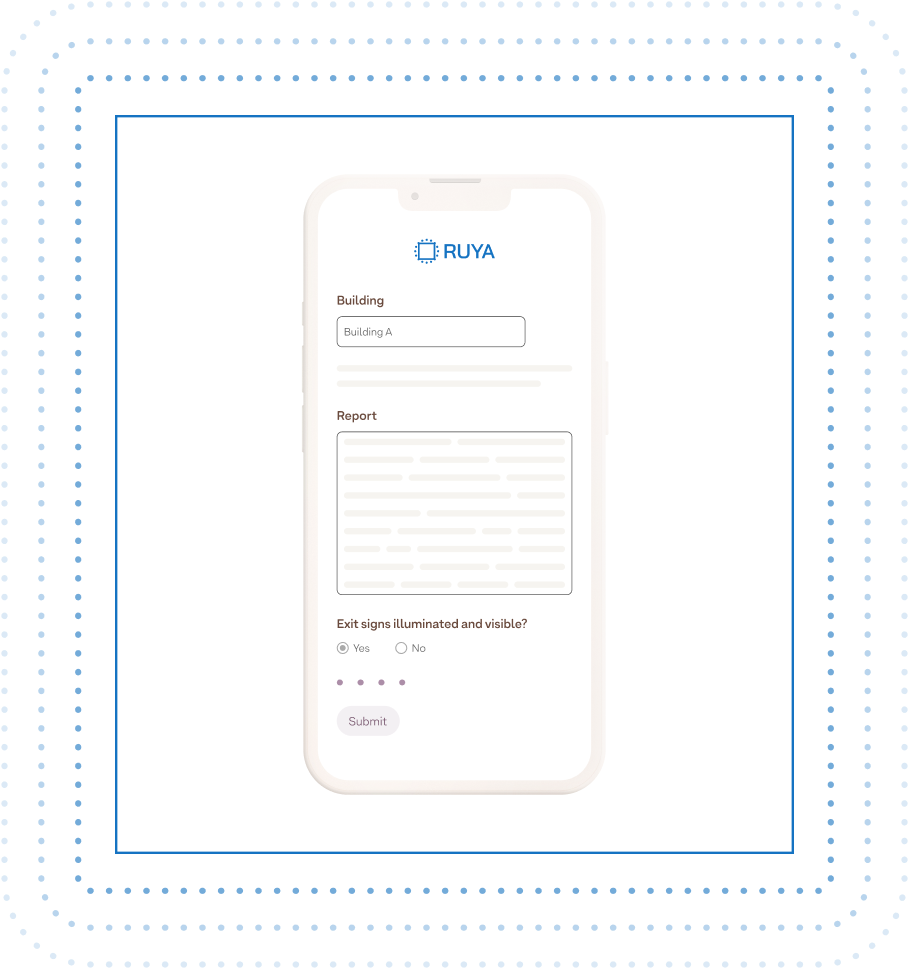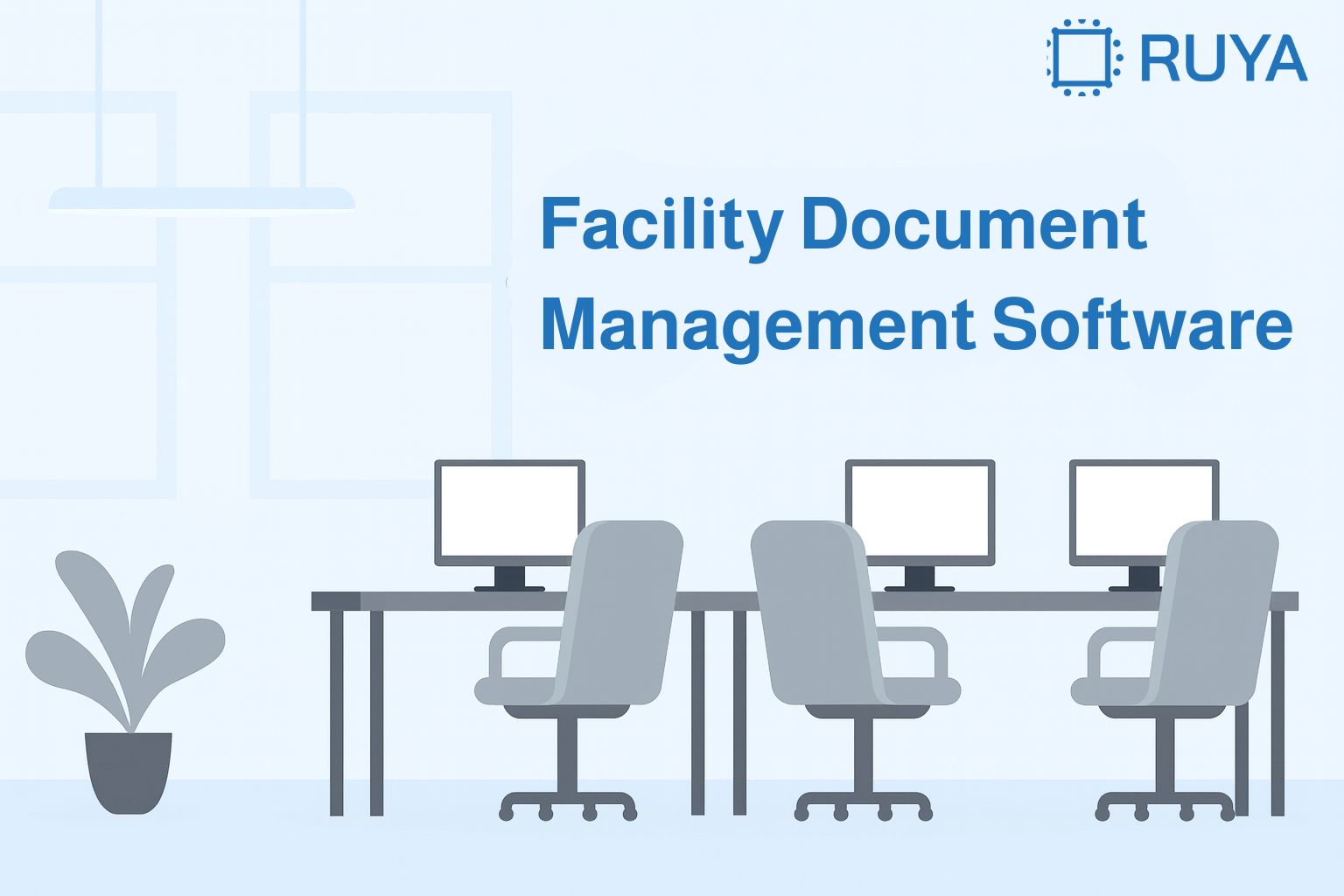What is a Document Control System? Our Guide to Features & Benefits for Hospitals

Quick Summary
Managing safety plans, floor layouts, and compliance records across hospital facilities is no small task. In this article, we break down what a document control system is, why traditional file management falls short, and which features matter most in healthcare environments. If you're responsible for keeping critical documents accurate and audit-ready, this guide will show you what to look for and why it matters.
Considering setting up a document control system?
Misplaced inspection reports, outdated safety plans, or missing maintenance records during a compliance audit can quickly spiral out of control when managing multiple hospital buildings. The cost of disorganized documentation is not only measured in time but also in risk, especially when patient safety and compliance are on the line.
That’s where a document control system like Ruya comes in. It centralizes, tracks, and secures every document tied to your facility’s operations and compliance efforts, ensuring you always have the right information at your fingertips.
In this article, we’ll explain what a document control system is, why it's crucial for healthcare facilities, and how it can help streamline your documentation, improve compliance, and reduce risk. In a high-stakes environment like healthcare, the right system isn’t just a convenience. It’s essential for passing audits and maintaining operational integrity.
Why listen to us?
At Ruya, we understand the day-to-day pain of finding, updating, and securing critical files across large healthcare facilities.

That’s why we’ve built a tool that makes real-time floor plan updates, code-based inspections, and mobile access standard, so your documentation never holds you back.
What is a document control system?
A document control system is a critical tool for healthcare facilities, designed to manage, track, and secure documents throughout their entire lifecycle. This system centralizes important files, such as policies, floor plans, safety documents, and compliance records, while ensuring they’re always accurate and accessible.
At its core, a document control system helps maintain version control, manage access permissions, and track audit logs, so everyone has the right information at the right time. It’s especially crucial in healthcare, where using outdated documents during inspections or audits can lead to costly errors and non-compliance.
Key benefits include:
- Automated Updates: Ensures documents are always current, eliminating the risk of relying on outdated files.
- Role-Based Access: Gives the right people access to the right documents, improving efficiency and security.
- Searchable Databases: Makes finding and retrieving critical information quick and easy, even across multiple locations.
These systems can be cloud-based, on-premise, or hybrid, depending on your facility’s needs and infrastructure. Ultimately, a document control system streamlines operations, reduces errors, and ensures regulatory compliance, making it an essential component of hospital management.
Why is a document control system essential for hospitals?
1. Improved regulatory compliance
Hospitals are at constant risk of failing compliance audits due to missing or outdated documents. A document control system minimizes that risk by ensuring all compliance records are accurate and consistent. It provides full traceability by tracking who accessed or edited a document, when it happened, and what changes were made. This audit trail makes responding to regulatory reviews or internal inspections much smoother.
In addition, permission settings allow hospitals to restrict access to sensitive records, preventing accidental edits and ensuring the right versions are always in use. For large hospital systems, these systems can also support:
- Multi-format files (PDF, DWG)
- Mobile access for field teams
- Automated alerts for expiring documents
With these features, hospitals can stay inspection-ready across all locations, making compliance far easier to manage.
2. Fewer operational risks
Operational risks often arise when floor plans, safety reports, or inspection records are outdated, missing, or duplicated. A document control system helps mitigate these risks by standardizing file creation, storage, and updating processes. When documents are scattered across personal drives or outdated folders, critical decisions are made with incomplete information, creating liabilities during emergencies, audits, or repairs.
Centralizing access and enforcing version control gives teams a single, reliable source of truth. Platforms like Ruya take it a step further by linking documents directly to building assets or inspection checklists, reducing the risk of human error.

3. Faster access to critical information
In large hospital systems, locating the right document quickly can make all the difference, especially during audits or emergencies. Document control systems eliminate this issue by enabling fast, easy access to essential records through search functions and mobile-friendly interfaces.
When integrated with other facility tools, these systems allow staff to instantly retrieve:
- Updated life safety plans
- Maintenance logs tied to specific assets
- Inspection records by date or location
This streamlined access improves response times, enhances decision-making, and ensures all departments stay aligned and efficient.
Document control system vs. traditional file management

Traditional file systems rely on local storage, shared drives, or outdated folder structures that make collaboration difficult and version control unreliable. These systems often lack context, traceability, and secure access at scale.
In contrast, document control systems are built for environments where accuracy and accountability are critical. They go beyond storage to actively manage documents throughout their lifecycle.
Here’s how they compare:
Features to look for in a document control system
- Mobile accessibility: Facility and compliance teams often work onsite, not behind desks. A system like Ruya’s that works on mobile ensures they can access and update documents during inspections, maintenance checks, or emergencies without waiting to return to a workstation.

- Multi-format support (PDF, DWG, Revit): Hospitals manage a wide range of file types. From detailed Revit models to annotated PDFs, your system should handle them all without conversion issues or version mismatches.
- Role-based access: Not every team member should have full access to all documents. Role-based permissions help restrict editing rights, protect sensitive data, and ensure accountability during audits.
- Integration with facility management tools: A standalone system creates silos. Look for a platform that connects directly with your asset directory, inspection software, or floor plan tools so documentation will always be tied to real-world facility operations.
Empower your healthcare facility teams with a smart document control system
A document control system is crucial for hospitals to manage compliance documents, safety plans, and floor plans with precision, easy access, and complete control. For large hospital systems, it's no longer optional—it’s a must-have for smooth operations and regulatory readiness.
With Ruya, you get mobile inspections, real-time floor plan updates, and effortless document access, all without the need for complex IT setups. Specifically designed for healthcare facility teams, Ruya helps you stay compliant and efficient, even across large portfolios.
Ready to take your facility management to the next level? Request a demo today and discover how Ruya can help your team stay audit-ready and streamline operations.

.svg)


